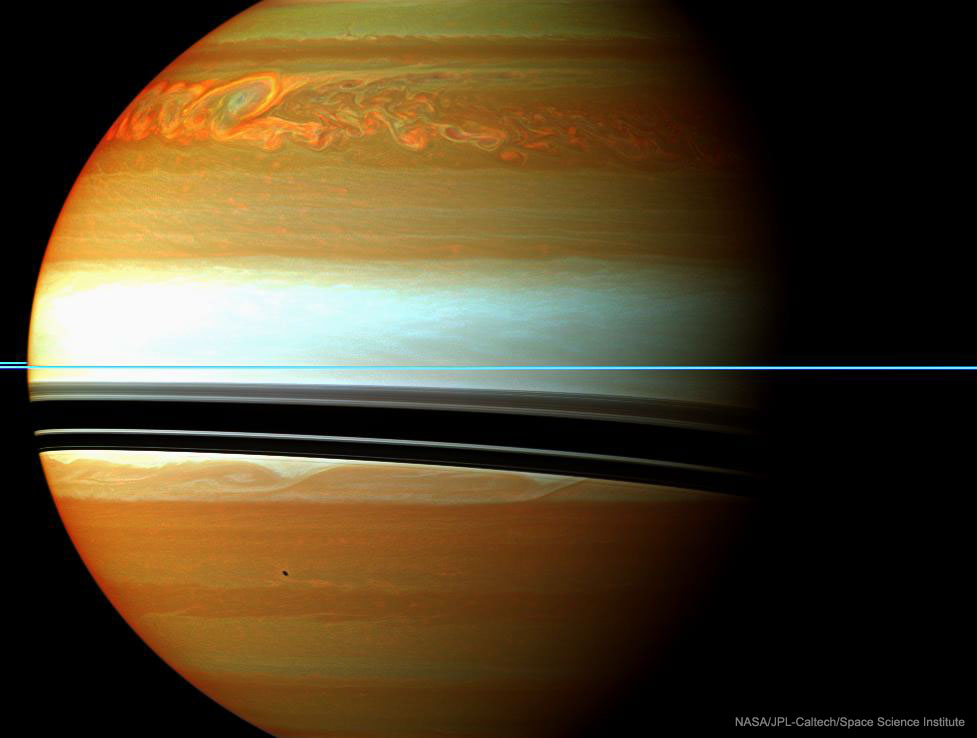2019 September 15
A Long Storm System on Saturn
Image Credit: Cassini Imaging Team, SSI, JPL, ESA, NASA
Explanation: It was one of the largest and longest lived storms ever recorded in our Solar System. First seen in late 2010, the above cloud formation in the northern hemisphere of Saturn started larger than the Earth and soon spread completely around the planet. The storm was tracked not only from Earth but from up close by the robotic Cassini spacecraft then orbiting Saturn. Pictured here in false colored infrared in February, orange colors indicate clouds deep in the atmosphere, while light colors highlight clouds higher up. The rings of Saturn are seen nearly edge-on as the thin blue horizontal line. The warped dark bands are the shadows of the rings cast onto the cloud tops by the Sun to the upper left. A source of radio noise from lightning, the intense storm was thought to relate to seasonal changes when spring emerges in the north of Saturn. After raging for over six months, the iconic storm circled the entire planet and then tried to absorb its own tail — which surprisingly caused it to fade away.
土星的颀长风暴系统
影像提供: Cassini Imaging Team, SSI, JPL, ESA, NASA
说明: 它是太阳系记录上最大、存活最久的风暴系统之一。在2010年底发现它时,这个位于土星北半球的云系,已经比地球还大,并且快速蔓延到整颗行星。当时除了从地球追踪这个风暴之外,绕行土星的卡西尼号太空船更近距一探究竟。这幅摄于2011年1月的假色红外光影像,以橘色系呈现对流云的深度,较浅色者为高云系。影像中,水平的细蓝线是近乎侧向的土星环,而在由左上方入射的阳光照射下,环系在云顶投射出弯曲的影子。这个带着闪电无线电杂讯的强烈风暴,可能是春季降临在土星北半球时,因季节更迭而造成的系统。在肆虐了超过6个月后,这个标志性的风暴环绕整颗土星,并在试图”吞噬”自已的尾巴时,意外的造成了它的消散。







